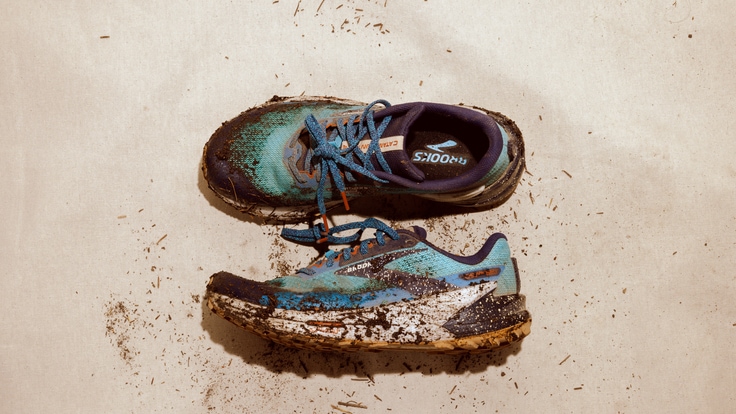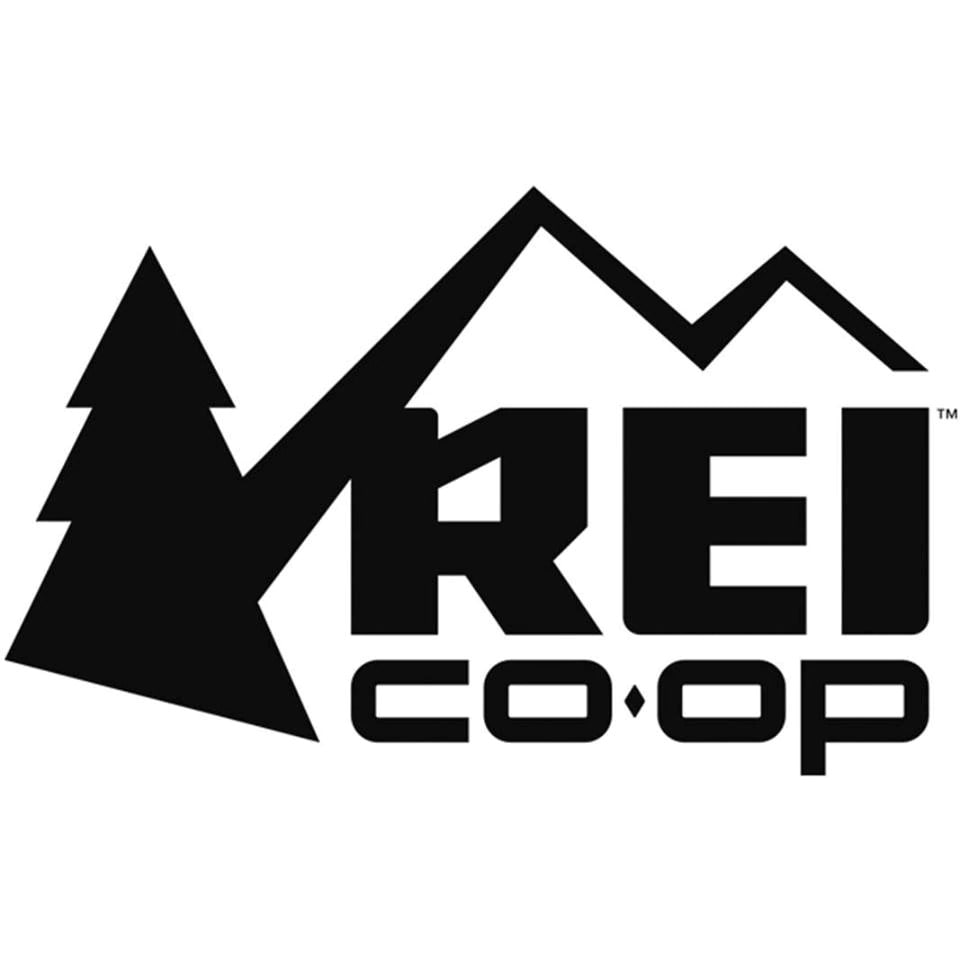Watch the video
Below is a transcript of Alan's video review, edited and formatted for clarity.
Brooks' Catamount 2 is fast and fun
The Catamount 2 is Brooks' new speedy trail runner. I've spent a lot of time in different trail shoes, but I've never quite spent time in a shoe that does exactly what this shoe is doing. I think that Brooks is on the edge of an exciting new trail running trend.
Disclaimer: I work at REI, and these shoes were provided to me for a review, but the opinions I'm going to be sharing today are all based on my experience in the shoes.
First Impressions
Weight: 9.7 ounces per shoe for men and 8.6 ounces per shoe for women.
Drop: 6 mm.
Pair that with a stack height that's pretty moderate for a Brooks trail shoe, and you get a really responsive, lower-to-the-ground, energy returning, fast trail-running shoe.
Background
It's the Catamount 2, which means it's only been around for two years. So, this is a relatively new effort for Brooks. The Catamount sits kind of squarely in the middle of Brooks' line.
Brooks divides their trail lineup into light-trail, mountain-trail and ultra-trail. There's two options that fit into the ultra trail category: the Caldera gives you that max cushion feel, perfect for long distsances, with plush comfort and a wider platform. The Catamount also works for long distances, but has more energy response and allows you to pick up the pace.
The Catamount has a firmer ride: If you're a longtime Brooks fan, you may remember some of the Pure line, which allowed you to run a closer to the ground on the trail, with less cushion. This is almost a revisitation of that ethos, where it gives you that firmer feeling underfoot. But what's really cool about the Catamount series is it gives you lots more energy return.
Design
If we take a look at the Catamount 2 from top to bottom, the first thing I notice about the shoe is how cool I think it looks; it just looks really rad. I think the way they wrote Catamount in the back is just a really cool call out. On this side of the shoe, there's these three little symbols there that almost feel like power badges or special skills that the shoe can do: One of them's a feather, which I think signals that the shoe is lightweight; one of them is arrows pointing all the way up (I'm thinking, maybe I can jump really high with these shoes. Certainly, it feels like I can go faster uphill); and the third symbol is a circle with directions everywhere—and to me is saying I can take the shoe anywhere. Lots of cool, really interesting design features on the upper part of the shoe.
Upper: We have this really tight-knit mesh upper in the top there, which feels really tear resistant. You can't see my fingers through there, which means that it's probably not super-thin. You can actually feel that there's an inner layer in there. It's not super-thick either, but certainly that second layer helps with protection from rocks. That layer actually extends down to the gusset of the tongue here, just giving you exactly the amount of protection you need while not adding a lot of weight. The shoe isn't super low volume; it isn't super high volume. It's probably right around in the middle there. The upper is hydrophobic, meaning it repels water, and it's made from recycled polyester.
All about laces: I like my laces a little bit long. I didn't have to heel-lock tie the shoe for a good fit. But the laces are textured and flat laces. I like a textured lace because it kind of just reminds me that I'm going on a trail run. With that texture, it's almost like the laces have outsoles. Another thing to call out is that there is a lace keeper here, so it's right at the end of the Catamount call-out. So if you usually tie your shoe and you find yourself with lots of lace left over after your preferred tie, you can pop your laces down there and keep them secure while you're going on the trail.
Structured yet soft heel: Towards the back of the shoe, we have the heel. There's a little bit of structure back there, but it's a lot softer up at the top, giving you that gator trap in the back too that's really popular for lots of folks. You can see as I pull mine back, there's a lot of dust coming off the shoes. I've used the shoes quite a bit.
Midsole: The story with the midsole is that it's made from DNA Flash, which is still nitrogen-infused DNA like the other DNA midsoles from Brooks, but they really dial in the amount of nitrogen and the amount of energy return you get. In the Catamount—versus the Caldera, which has DNA Loft—you'll feel a lot more of that bounce-back in the shoe. You don't sink into the shoe as much there. The SkyVault propulsion plate feature helps accentuate that. Picture yourself just on that vault and then just bouncing right back up, which is a cool way to have fun on the trail, and also a cool way to not lose speed on the trail.
Outsole: If we get down to the outsole, again, there's the DNA Flash there. Down here is the TrailTack, which is familiar to folks that have run in Brooks trail runners before. And this is just their really sticky kind of outsole. On the front part of the shoe, the lugs are facing forward, andon the back part they're facing the other way so that you can get a little bit more of a breaking action. Getting all of the way to the edge of the shoe with more aggressive trail tread means that you can feel secure no matter what trails you're on.
Out and About in the Brooks Catamount 2
Overall, there are new features that I really welcome—from the lugs to the fresh upper—and I want to see what the evolution of the shoe will feel like on the trail. So I put about 55 miles in the Catamount 2.
A Pleasant Surprise
A big adventure I was able to take these shoes on was the Wonderland Trail. (Read more and watch a short film about my adventure: Gear Check: Running the Wonderland Trail at Mount Rainier.) That trips was about 93 miles over three days. These were my day-three shoes. The first two days, I wore shoes that had a little bit more volume in them. And I thought with my feet being tired after two really long days on the trail and my feet being swollen, I wasn't necessarily going to want a shoe that gives me more energy return. Don't I want just all the cushion I can get? In the end, I was like, "Whoa, actually, I really like this." Even though my body was tired, I was brought back to life a little bit, being sprung up by the shoes.
One of the things that they didn't surprise me with was that they would make me excited to go run on the trails. And I for sure can see myself wanting to pick these up when I want to be really intentional about pace, or if I want to feel fast running as fast as I can to the top of that hill—or, more realistically, running as fast as I can down the hill.
Who is the Brooks Catamount 2 for?
The Catamount 2 is a great shoe for anybody that's looking to get on trails, but have more nimbleness to their runs. I mentioned before that Brooks is positioning it as an ultra-distance shoe, which is kind of interesting, right? Because if it's built for ultra distances, it's built for less-than-ultra distances too. You can use a shoe in a lot of different ways, but I think where it really excels is if you want to put the energy and the effort into going faster, further and higher. This is a really good shoe to have fun with.
A fast, yet versatile trail runner: For trail-racing shoes, it's really interesting to see which direction companies go, but I don't know that I've seen this direction yet from other brands. This almost feels like the Saucony Endorphin Speed on the roadside. It's a shoe that you can use as a daily trainer, but it's got a midsole component that really gives you that speedy edge. So even if you're looking to train a little faster, race a little faster... you can still go slow with the shoe; it has the cushion on it. So I actually think that this is taking lots of cues from what we're seeing in faster daily trainers on the road than it is in what we're seeing in faster racing shoes on the trail side right now.
What do you think?
So that's my look at the Catamount 2, but I'd love to hear from you all. Were you a big fan of the original Catamount? What do you think about the updates to the second version? Are there other shoes that you think I should be trying that offer this experience? Leave a comment on the YouTube page.
Best Long Distance Trail-Running Shoe
Brooks Catamount 2 Trail-Running Shoes
Score 90
Weight 1 lb. 1.1 oz. (women's), 1 lb. 3.4 oz. (men's)
Heel-to-toe drop (mm) 6
Cushion Moderate (22 mm stack height)
Long runs don't have to be super slow. Sometimes, especially when you're training for a race or caught up in beautiful surroundings, you want to pick up the pace. The Brooks Catamount 2 is designed to take your farther, faster, while also packing in comfort and stability for shorter and slower runs. REI store manager Alan Ortega took them on a leg of his 93-mile run on Mount Rainier's Wonderland Trail before reviewing the shoe on the Run with REI YouTube channel. He wore them on the third and final day of the adventure, when his feet were ready for a break: "Even though my body was tired, I was brought back to life a little bit, being sprung up by the shoes."
With a relatively low-profile 22-millimeter stack height and a DNA Flash EVA midsole, the Catamount 2 is firmer than some of its max-cushion brethren, but makes up for it with responsiveness. If you're looking for a cushier long run companion, try the Brooks Caldera 6, which Alan reviews here.
The Catamount 2 is billed as an ultra-trail shoe, but testers put it through the paces at shorter distances too, saying its nimbleness allowed them to pick up the paces when desired without pushing them too hard. Ortega even touts them as a possible trail racing shoe, particularly for those running ultras and in need of something both speedy and supportive. Buy women's. Buy men's.
Bottom Line: Going long and (maybe) fast too? The Brooks Catamount 2 is nimble yet supportive, with plenty of breathability and bounce to help along tired feet.
Testing Stats:
- Total distance: 110 miles
- Testing states: California and Washington





![Catamount 2 Trail-Running Shoes - Women's [Left view (Blue/Black/Yellow)]](/media/a4a9d103-de18-493c-ac59-1d21241061e3/?size=440)

![Catamount 2 Trail-Running Shoes - Women's [3/4 view (Blue/Black/Yellow)]](/media/47a79a91-deba-4d66-9f0f-0229ad8095a3/?size=440)

![Catamount 2 Trail-Running Shoes - Women's [Back view (Blue/Black/Yellow)]](/media/31c38820-fa32-45fc-9ce8-081a3e30fa43/?size=440)

